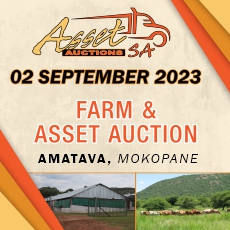Alpaca Farming
Alpacas are mainly bred for their fine and soft fleece which are available in 22 natural colours, but predominantly white.
Alpaca farming in South Africa started in the 21st century, when in 2000, from the high-altitude regions in the Andes Mountains of Chile, the first 60 alpacas made their way to the country. These camelids formed the first foundational herd. Subsequent imports from Chile, Peru, and Australia allowed the alpaca industry in South Africa to expand to an estimated 10 000 animals in 2019, not all of them registered.
Alpacas are now a registered breed in South Africa with breeders and owners supported by the South African Alpaca Breeders Society - an organisation that was initiated in 2001. Alpacas in South Africa are farmed for their fleece, as breeding stock, they are also sold as pets, and for their highly effective guarding of sheep flocks.
These few articles give a general overview of alpaca farming in South Africa as well as some information on the processing and use of alpaca fleece.
By Marinda Louw
Alpaca Fleece
Alpacas, about three weeks after their yearly shave. Alpacas come in 22 natural colours.
Alpaca fleece has been used for millennia for their durable soft and insulating fibre. As they are semi-domesticated members of the South American camelids, they are shorn once a year in springtime. Alpaca farming in South Africa is thus a viable industry as the animal can efficiently convert food to wool - alpacas are considered the most efficient fibre-producing animal.
Properties of Alpaca Fibres
Alpaca fleece can be used for yarn or felting, suitable for babies and those with sensitive skin.
Alpaca fibre is very fine and therefore downy, almost silky, to the touch. It is said to be five times stronger and finer than wool and also longer than most other natural fibres. Various factors determine the softness of alpaca fibre. Individual alpaca fibres consist of outer ‘scales’ lying against the shaft of the fibre. The scale height of alpaca fibre is about 0.04 microns compared to 0.08 microns for wool. This, in practice, means alpaca fibre feels softer than wool. The scales are longer than both wool and mohair, again enhancing the smoothness of alpaca fibre over the other two types of fibre.
Alpaca fibre is water-resistant, resist solar radiation and contains microscopic air pockets giving it insulation properties.
It does not contain lanolin, an oily substance secreted by wool-producing animals. The residue from the chemicals required to eliminate lanolin from sheep's wool often causes itchiness as a symptom of an allergic reaction. However, alpaca fibre does not cause this irritation and is suitable for use in baby garments and for people with sensitive skin.
Alpaca fleece comes in 22 different colour and shade classifications and several classifications of fineness ranging between about 16 and 30 microns. The lower the micron the finer and softer it is. Colours range from white, shades of brown, and grey to black with white being the predominant colour.
Types of Alpaca Fleece
The majority of alpacas in South Africa are of the Huacaya genotype of which the fibres are used for articles like these woven scarves.
There are two phenotypes of alpacas, the Huacaya with its more sheep-like spongy fibre and the Suri alpaca with its longer, smoother fibre. Huacaya fibre has a wavy fibre that retains its shape over time and is more suitable for knitted products. Suri fibre has a certain silk-like lustre and is preferred for high-end products such as alpaca suits.
Alpaca fleece needs to be graded well to reduce the occurrence of coarse fibre, called guard hair. Factors such as poor genetics, high protein content in alpaca feed, and the animal’s age can cause coarsening of the fibre.
Processing Alpaca Fleece
Alpaca fibre comes in 22 natural shade varying from white and grey to various browns and black.
There are various facets involved in the production of alpaca fibre products. The process starts with fleece harvesting. Alpaca fleece (or fibre) is harvested once a year in September or October, depending on the severity of South African’s winter. All adults and crias (baby alpacas) as young as six months are shorn by a specially trained alpaca shearer using equipment that is similar to the ones used for sheep. A cria produces about 1 kg of fibre while an adult alpaca can produce about 2.5 kg or sometimes more.
The fibre is then hand-picked clean to remove vegetative matter such as thorns and grass. Then the alpaca fibre of similar colours is combined. Some alpaca fleece producers may collect bits of similar-coloured fibre in a ‘spots’ lot. For example, brown fibre from a white animal with a small patch of brown.
Skirting is the process during shearing (or afterwards) when the visible coarse ‘guard hair’ - which may measure over 30 microns is removed from the fine part of the fleece. The actual de-hairing process at the mill removes the rest of the thicker straight hairs.
Fibre is then sent for processing at a special mill in Butterworth in the Eastern Cape. Calibration of machinery used for mohair processing is not able to process alpaca fibre. Fibre is first washed while keeping colours separate, air-dried and then carded. Carding aligns the alpaca fibres in parallel. After carding the fibres are ready for spinning into knitting or weaving yarns.
Genetics and Alpaca Fleece
Breeding for a specific colour fleece is a complicated affair in alpaca farming, especially the colour grey. Much research is being done on breeding for this colour, says Alison Notley, president of the South African Alpaca Breeders Society and owner of Helderstroom Alpacas.
Australia is doing much to improve the genetic quality of alpaca fleece especially in terms of variation in fibre thickness, reducing inferior fleece portions and reducing the ratio of primary to secondary fibres (coarse guard hair).
By Marinda Louw
Buying Alpacas
Buy the best alpacas you can afford, is the advice from alpaca farmers in South Africa. New alpaca farmers may also choose to buy SA Studbook-registered animals from other South African alpaca breeders and can spend up to R 20 000 - R 25 000 (2019) on good quality young pregnant females. Herdsire alpacas (males to be used in a breeding program) can cost R 15 000 - 18 000 or more, estimates Dr Gavin Lindhorst, an alpaca breeder and importer. Alpacas to be used as flock guards or pets can cost much less than breeding animals.
Visit alpaca breeders to learn about alpaca breed standards, breeding history, assessing animals’ fibre and look at herdsires (breeding males) used in the herd. If wanting to build up a herd fast, start with pregnant females, advises Dr Lindhorst.
Apart from animals being imported from Chile and Peru, South Africa has also imported alpacas from Australia. Australia has acquired Peruvian bloodlines, has an active registry and show circuit which identifies superior alpacas, says Dr Lindhorst.
In addition, Australian animals have been exposed to normal livestock parasites and diseases, whereas alpacas’ natural habitat in the high Andes mountains (+3 000 m) is a sterile environment.
Farming Alpacas
Managing the alpaca herd improves when age groups like these weanlings are kept together.
Alpacas may be farmed for breeding purposes or as flock guards, but most often the ultimate objective is good fibre quantity and quality. This is determined not only by the animal’s genetics, but good nutrition and management affect how these genetics are practically utilised. For example, managing the pastures to limit fibre contamination (grasses and thorns in the fleece) around shearing time.
Alpacas are kept on pastures such as kikuyu or Eragrostis and some graze on fynbos in the Karoo. Pasture feeding can be supplemented with concentrates (grains, pellets, mineral mix, etc.) or horse meal combined with low-protein game pellets and lupin seeds. The protein content of the diet can influence alpaca fleece quality; high protein may lead to coarsening of the fibre. It is worth noting that the alpaca has the ability to extract nutrients from the poorest grazing, but farmers are nevertheless encouraged to supplement natural grazing with additional nutrition.
It is advised to organise the farm into enough camps to be able to rotate grazing. Beware of overstocking. Various camps are also needed to accommodate the different groups such as pregnant females or yearling females, herdsires and young males, weanlings and high-care alpacas - animals that may need medicine or special nutrition.
Female alpacas (hembras) are ready to breed at 18 to 22 months and will give birth to a single cria after around 340 days. Just over two weeks after giving birth, she can be mated again. Twin alpacas are extremely rare.
Toenails and bottom teeth should be checked annually and trimmed if necessary and vaccinations are similar to those used in sheep farming. This includes protection against bluetongue virus, Rift Valley fever and Clostridia diseases.
Shearing Alpacas
After cleaning and carding it (to align fibres parallel) alpaca fleece are spun into yarn (middle) for knitting or weaving.
Alpacas are shorn once a year, usually in springtime - September or October depending on the temperature - and can be shorn as young as six months. Similar equipment to sheep shearing is used, but a special alpaca blade is used to leave at least 4 mm of fibre on the body. Alpacas have tighter skin than sheep and must be shorn with great care to avoid injury.
The fleece from the wither (base of the neck) to the tail and around the sides of the animal is the best quality. This is called 'prime' or 'firsts'. The ‘seconds’ are the fibres on the legs and neck. The fibre on the head and the ‘bonnet’ is shorn when it becomes too long and inhibit the alpaca’s vision but this fibre is seldom used as it is too coarse.
By Marinda Louw








